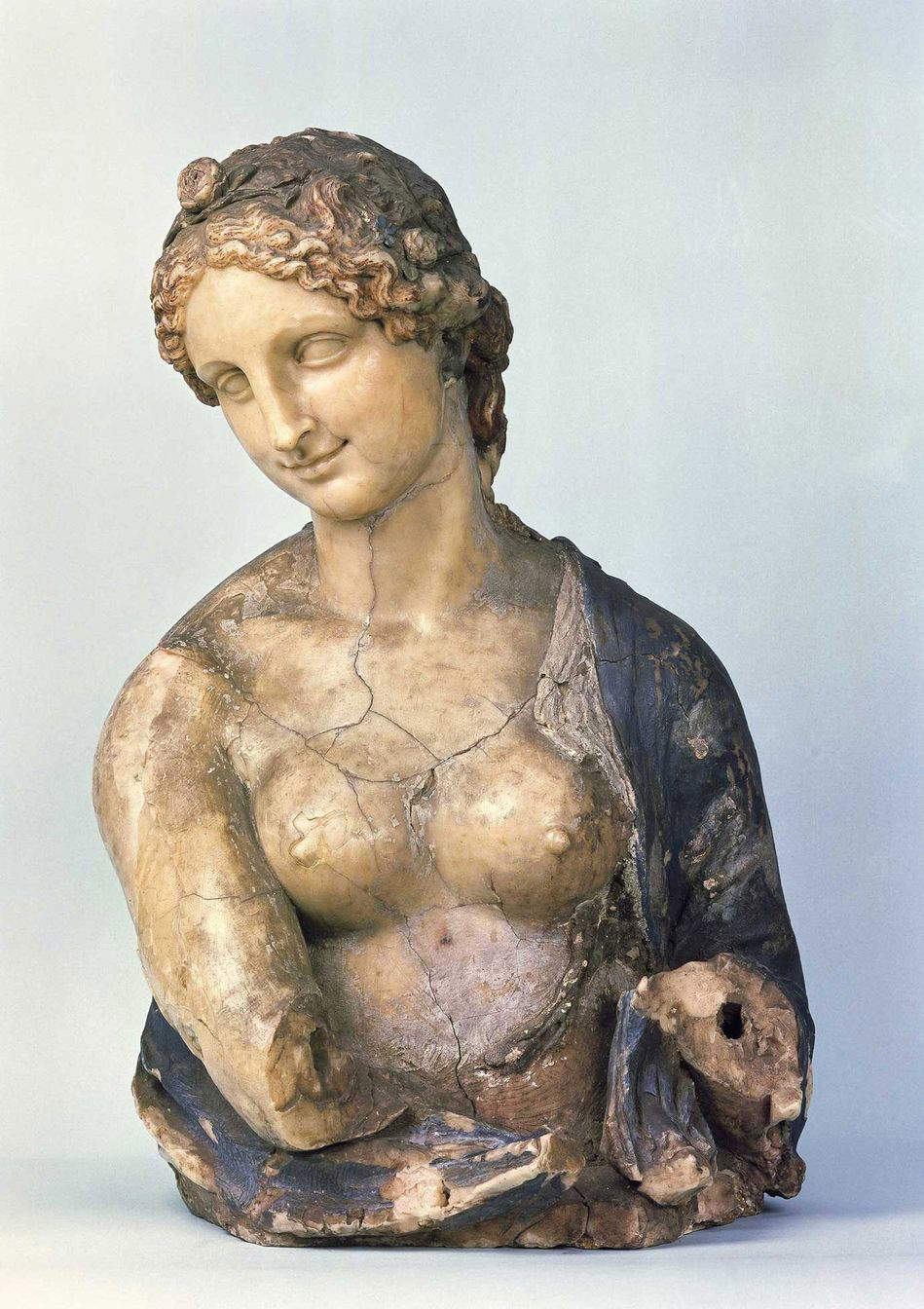The Bode Museum in Berlin will definitely have to change the caption of the bust of Flora, a wax work that was purchased in 1909 by Wilhelm von Bode, then director of Prussian art collections, from a London gallery that passed off the work as an original by Leonardo da Vinci. Bode and the German public were convinced that they had come into possession of a lost masterpiece, but by the following year art historian Gustav Pauli had already expressed his misgivings by speculating that the bust might be a modern work, created by English sculptor Richard Cockle Lucas (Salisbury, 1800 - Chilworth, 1883). Confirming later that the work was indeed made by Lucas, it was again in 1910 his son Albert Dürer Lucas, who also swore that he had helped his father make the work around 1846, and moreover provided technical indications (the work would have been made from the remains of old candles and with scraps of newspaper and wood embedded in the base).
Despite the evidence, Bode continued to assert that the attribution was correct: a debate ensued between those who considered the work to be a modern sculpture, and those who defended the soundness of Bode’s attribution. Today, the sculpture’s file on the museum’s website lists it as a work “in the manner of Leonardo,” but without specifying the period of its creation, recalling the history of the controversy that pitted Bode against Lucas, and stating that at the moment the Flora is “the subject of scientific analysis,” even though by now, it will be appropriate to reiterate, practically no one believed in the possibility that it was a Renaissance work.
 |
| The bust of Flora (wax, 67 x 44 x 37 cm) |
Now the results of those analyses are in: a study by researchers Ina Reiche, Lucile Beck and Ingrid Caffy of the Centre national de la recherche scientifique (CNRS: that’s the French CNR), published in Nature, subjected the bust to radiocarbon dating and further examination to understand the composition of the material. The researchers thus found that the wax used for Flora is largely spermaceti wax, that is, made from the oily substance found in the heads of sperm whales, and widely used precisely for candle-making in the 19th century-a material that was extremely rare in the Renaissance, the scientific article says, but widely used in the 19th century. The presence of spermaceti wax had already been detected in the 1910s and then later in the 1980s, but it had not been possible to tell whether these were materials added later to a possible original. A radiocarbon dating had also been attempted in the 1980s, which, moreover, had yielded the same verdict (i.e., 19th century), but the novelty of the study by Reiche, Beck, and Caffy lies in the fact that the sampling of the material done for the occasion is much more comprehensive than those done in the past, and the same material was examined through comparative analysis with other objects of certain accomplishment of the 19th century, in particular with a relief of certain attribution to Richard Cockle Lucas, and it turned out that the chemical composition of the two works is very similar.
Radiocarbon dating results also rule out a realization in the Renaissance: the earliest material (among the wood, paper, wax, and fabric fragments) cannot date to before 1650, the paper says. The results are then comforted by the methods used: “we generated a new calibration method,” the researchers write in their scientific contribution, “and dated the bust to the 19th century. This proves that the work was not produced in the Renaissance, and therefore cannot be attributed to Leonardo da Vinci.” And the Bode Museum can therefore update its catalog entry.
 |
| Case of Leonardo's believed Flora solved scientifically: it is a 19th century work |
Warning: the translation into English of the original Italian article was created using automatic tools. We undertake to review all articles, but we do not guarantee the total absence of inaccuracies in the translation due to the program. You can find the original by clicking on the ITA button. If you find any mistake,please contact us.